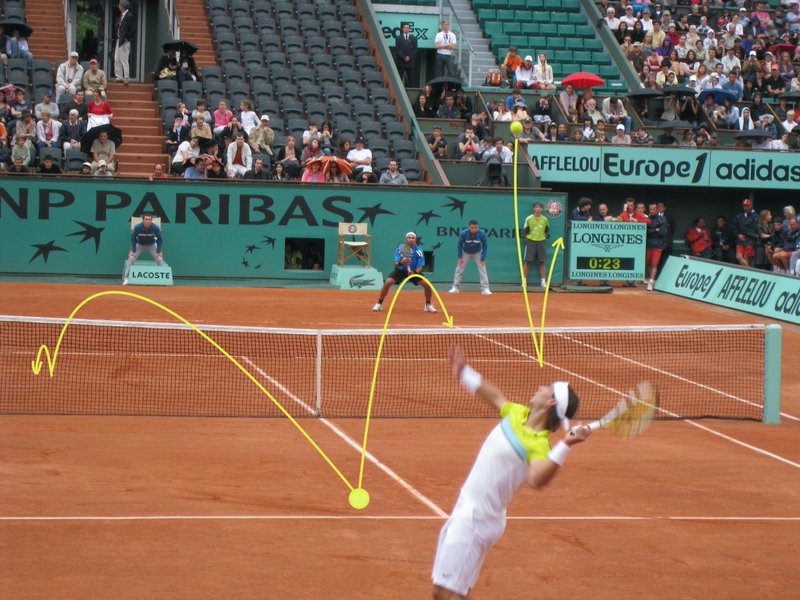
Four Key Aspects in Tennis #3: Serve and Return
Serve and return are the fundamental techniques that underpin the game of tennis. They serve as the initial exchanges that set the stage for every shot that follows.
First Serve and Second Serve
Firstly, the mindset behind the serving techniques is clear-cut:
The primary objective of the first serve is to secure an advantage over the rally, while the second serve aims to prevent the opponent from offending.
It's important to acknowledge that hitting a service winner, as seen among top-level players, may not be a realistic goal for amateur tennis enthusiasts. The primary objective of the first serve, in our context, is rather to take the upper hand of the rally. For instance, executing a well-placed slice serve out wide can open up a substantial area of the court, providing you with strategic options. You can direct your next shot into this open space, forcing your opponent into a hurried chase.

However, hitting to the open space is rather an obvious move. That’s why by hitting your subsequent shot in the same direction as the serve, you can catch your opponent off-balance, effectively hitting behind them. Another strategic option involves utilizing a short drop shot near the net, a move that can prove especially perplexing for your opponent. This tactic is highly effective because previous shot choices force your opponent to move sideways along the baseline, making them vulnerable to shorter shots. In tennis, strategies and tactics are just as vital as power and precision, and these nuanced strategies can significantly impact the outcome of a match.

Moving on to the second serve, its primary purpose is to deter your opponent from launching an offensive return. An effective second serve typically targets your opponent's weaker side, whether it's their backhand or forehand, and incorporates sufficient spin for accurate placement within the service box. Employing topspin can be an effective strategy to push your opponent further back, limiting their ability to take an aggressive stance. Additionally, a well-executed slice serve with a low, skidding trajectory can be effective in denying your opponent the opportunity to slap powerful returns from significant heights.

Arts of Returning
Lastly, we come to the art of returning serves, an aspect of the game that encompasses a vast array of techniques, making it nearly impossible to cover everything comprehensively. In the past, returning was relatively straightforward, with players targeting the middle of their opponent's court and then constructing the rally from there. However, the landscape of tennis has evolved, with some players opting for deeper court positions, even on hard courts, and employing powerful returns, much like Medvedev.

On the other hand, some seasoned players, such as Wawrinka, prefer to utilize block returns, incorporating volley techniques to execute slice shots. In contrast, contemporary players like Alcaraz and Tiafoe have embraced a dynamic approach, which I call “return dashing”, a tactic primarily employed against second serves. It involves quickly approaching to the net as soon as the return is made. Nevertheless, with the ever-evolving nature of the game, we often witness strategies branching out and influencing one another.

Finals Words
Today's blog was on the topic of Serve and Return. Here are the key takeaways of today's lesson:
The primary objective of the first serve is to secure an advantage over the rally, while the second serve aims to prevent the opponent from offending.
Strategy and tactics are just as vital as power and precision.
On the second serve, using different types of spin has different effects on the opponent’s return.
In modern tennis, a variety of returns is employed: from returns from way back of the court, to block returns, to return dash.
Next up is the fourth and final key aspect in the sport of tennis. Stay tuned and keep up the good tennis!
この記事が気に入ったらサポートをしてみませんか?
